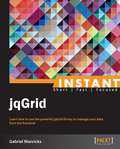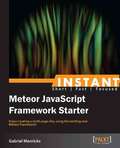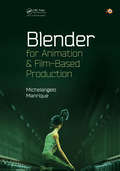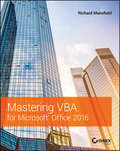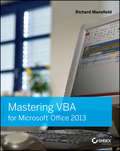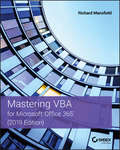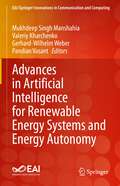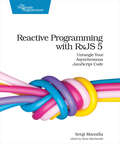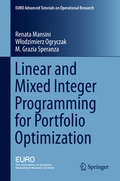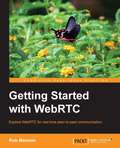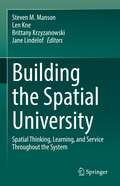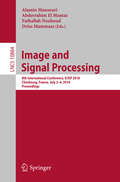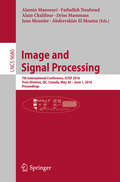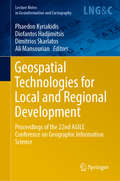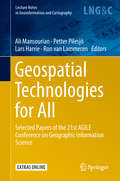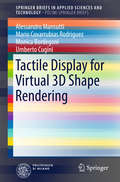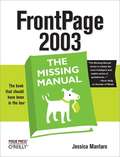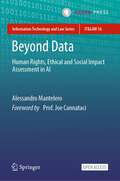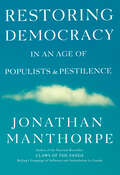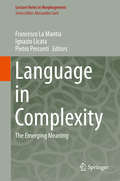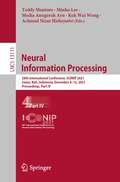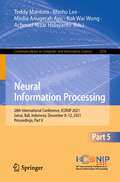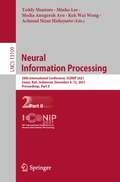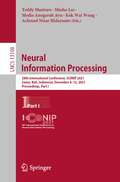- Table View
- List View
Instant jqGrid
by Gabriel ManricksGet to grips with a new technology, understand what it is and what it can do for you, and then get to work with the most important features and tasks. A step-by-step, practical Starter book, Instant jqGrid embraces you while you take your first steps, and introduces you to the content in an easy-to-follow order.This book is aimed at people who have some knowledge of HTML and JavaScript. Knowledge of PHP and SQL would also prove to be beneficial. No prior knowledge of jqGrid is expected.
Instant Meteor JavaScript Framework Starter
by Gabriel ManricksGet to grips with a new technology, understand what it is and what it can do for you, and then get to work with the most important features and tasks.A simple Starter approach to show the readers how to develop a real-time web application using Meteor, with the help of a sample project.This book is ideal for people with knowledge of standard JavaScript, basic HTML, and some CSS. This book starts at the very beginning, from installing the framework on your computer all the way up to deploying your finished app on the Web. If you want to get into this exciting new framework, and you would like to learn how to take a project from being a concept to a real-world app, then this is definitely the book for you.
Blender for Animation and Film-Based Production
by Michelangelo ManriqueSee Why Blender Is Right for Your Studio's PipelineBlender for Animation and Film-Based Production explores why Blender is ideal for animation films. It demonstrates Blender's capability to do the job in each production department. Whether you are a beginner or more advanced user, you'll see why Blender should be taken into consideration in animati
Mastering VBA for Microsoft Office 2007
by Richard MansfieldEven if you're not a programmer, you can quickly learn to write macros, automate tasks, and create custom applications for Office 2007 with Microsoft'sVisual Basic for Applications (VBA) and the in-depth instruction in this comprehensive guide. You'll jump right into the basics of recording and running macros with Office's built-in Macro Recorder, before quickly moving to the essentials of VBA syntax, using loops and functions, building effective code, and programming applications in Word, Excel, PowerPoint, Outlook, and Access. Includes pages of real-world examples and techniques.
Mastering VBA for Microsoft Office 2013
by Richard MansfieldA unique, comprehensive guide to creating custom apps with VBA Automating computing tasks to increase productivity is a goal for businesses of all sizes. Visual Basic for Applications (VBA) is a version of Visual Basic designed to be easily understandable for novice programmers, but still powerful enough for IT professionals who need to create specialized business applications. With this invaluable book, you'll learn how to extend the capabilities of Office 2013 applications with VBA programming and use it for writing macros, automating Office applications, and creating custom applications in Word, Excel, PowerPoint, Outlook, and Access. Covers the basics of VBA in clear, systematic tutorials and includes intermediate and advanced content for experienced VB developers Explores recording macros and getting started with VBA; learning how to work with VBA; using loops and functions; using message boxes, input boxes, and dialog boxes; creating effective code; XML-based files, ActiveX, the developer tab, content controls, add-ins, embedded macros, and security Anchors the content with solid, real-world projects in Word, Excel, Outlook, PowerPoint, and Access Covering VBA for the entire suite of Office 2013 applications, Mastering VBA for Microsoft Office 2013 is mandatory reading.
Mastering VBA for Microsoft Office 365 (Mastering Ser.)
by Richard MansfieldCustomize and ramp-up Office 365 applications The revised 2019 edition of Mastering VBA Microsoft Office 365 offers an accessible guide that shows how to extend the capabilities of Office 365 applications with VBA programming. Written in clear terms and understandable language, the book includes systematic tutorials and contains both intermediate and advanced content for experienced VB developers. Designed to be comprehensive, the book addresses not just one Office application, but the entire Office suite. To enhance understanding, the content is explored in real-world projects in Word, Excel, Outlook, and PowerPoint. Since the technical programming methods in the Office applications continue to evolve, the updated 2019 edition reviews the changes to the program. Code libraries, the API, and the object model for each Office program have been modified during the three years since the last version of this book. Various elements within VBA have been deprecated or replaced, and the surface UI changed as well. The updated 2019 edition covers topics such as: • Recording macros and getting started with VBA • Learning how to work with VBA • Using loops and functions • Using message boxes, input boxes, and dialog boxes • Creating effective code • XML-based files, ActiveX, the developer tab, content controls, add-ins, embedded macros, and security Written for all levels of Microsoft Office 365 users, Mastering VBA Microsoft Office 365: 2019 Edition explains how to customize and automate the Office suite of applications.
Advances in Artificial Intelligence for Renewable Energy Systems and Energy Autonomy (EAI/Springer Innovations in Communication and Computing)
by Mukhdeep Singh Manshahia Valeriy Kharchenko Gerhard-Wilhelm Weber Pandian VasantThis book provides readers with emerging research that explores the theoretical and practical aspects of implementing new and innovative artificial intelligence (AI) techniques for renewable energy systems. The contributions offer broad coverage on economic and promotion policies of renewable energy and energy-efficiency technologies, the emerging fields of neuro-computational models and simulations under uncertainty (such as fuzzy-based computational models and fuzzy trace theory), evolutionary computation, metaheuristics, machine learning applications, advanced optimization, and stochastic models. This book is a pivotal reference for IT specialists, industry professionals, managers, executives, researchers, scientists, and engineers seeking current research in emerging perspectives in artificial intelligence, renewable energy systems, and energy autonomy.
Reactive Programming with RxJS 5: Untangle Your Asynchronous JavaScript Code
by Sergi MansillaReactive programming is revolutionary. It makes asynchronous programming clean, intuitive, and robust. Use RxJS 5 to write complex programs in a simple way, and master the Observable: a powerful data type that substitutes callbacks and promises. Think about your programs as streams of data that change and adapt to produce what you want. Manage real-world concurrency and write complex flows of events in your applications with ease. Take advantage of Schedulers to make asynchronous testing easier. The code in this new edition is completely updated for RxJS 5 and ES6. Create concurrent applications with ease using RxJS 5, a powerful event composition library. Real-world JavaScript applications require you to master asynchronous programming, and chances are that you'll spend more time coordinating asynchronous events than writing actual functionality. This book introduces concepts and tools that will greatly simplify the process of writing asynchronous programs. Find out about Observables, a unifying data type that simplifies concurrent code and eases the pain of callbacks. Learn how Schedulers change the concept of time itself, making asynchronous testing sane again. Find real-world examples for the browser and Node.js along the way: how about a real-time earthquake visualization in 20 lines of code, or a frantic shoot-'em-up space videogame? You'll also use Cycle.js - a modern, reactive, web framework - to make a new breed of web applications. By the end of the book, you'll know how to think in a reactive way, and to use RxJS 5 to build complex programs and create amazing reactive user interfaces. You'll also understand how to integrate it with your existing projects and use it with the frameworks you already know. All the code in this new edition has been thoroughly revised and updated for RxJS 5, ES6, and Cycle.js Unified. What You Need: NodeJS 6.x and a modern web browser
Linear and Mixed Integer Programming for Portfolio Optimization
by Renata Mansini Włodzimierz Ogryczak M. Grazia SperanzaThis book presents solutions to the general problem of single period portfolio optimization. It introduces different linear models, arising from different performance measures, and the mixed integer linear models resulting from the introduction of real features. Other linear models, such as models for portfolio rebalancing and index tracking, are also covered. The book discusses computational issues and provides a theoretical framework, including the concepts of risk-averse preferences, stochastic dominance and coherent risk measures. The material is presented in a style that requires no background in finance or in portfolio optimization; some experience in linear and mixed integer models, however, is required. The book is thoroughly didactic, supplementing the concepts with comments and illustrative examples.
Getting Started with WebRTC
by Rob MansonThe book will follow a step-by-step tutorial approach to construct an application that allows video conferencing and calls between two browsers and a system for sharing files among a group.This book is ideal for developers new to the WebRTC standards who are interested in adding sensor-driven, real-time, peer-to-peer communication to their web applications. You will only need basic experience with HTML and JavaScript.
Building the Spatial University: Spatial Thinking, Learning, and Service Throughout the System
by Steven M. Manson Len Kne Brittany Krzyzanowski Jane LindelofThis volume discusses the concept of The Spatial University as part of the broad growth of spatial science and the need for spatial infrastructure in colleges and universities. The book centers on the development of U-Spatial, the spatial science infrastructure at the University of Minnesota that offers a range of spatial activities and services, including data access, training, and community building. Against a backdrop of the changing nature of research, teaching, and service in higher education, the story of U-Spatial anchors a broader discussion of what it means to be a spatial university. This narrative framing demonstrates—with specific examples—the importance of institutions offering dedicated spatial research infrastructure. In six chapters, the text explores the importance of spatial thinking, learning, and research for student and researcher success. The volume offers lessons that are applicable far beyond the University of Minnesota to apply to a broad array of domains and institutional specializations. The book will be useful to students, researchers, and policymakers concerned with how institutions can encourage spatial research, teaching, and service. It will also appeal to researchers and practitioners interested in broader uses of spatial science.This book shows how GIS can transform a university, speaking to the need for leadership in higher education around the power of bringing everything together using spatial and geographic concepts. Jack Dangermond Co-Founder and President, Esri
Image and Signal Processing: 8th International Conference, ICISP 2018, Cherbourg, France, July 2-4, 2018, Proceedings (Lecture Notes in Computer Science #10884)
by Alamin Mansouri Abderrahim El Moataz Fathallah Nouboud Driss MammassThis book constitutes the refereed proceedings of the 8th International Conference on Image and Signal Processing, ICISP 2018, held in Cherbourg, France, in July 2018. The 58 revised full papers were carefully reviewed and selected from 122 submissions. The contributions report on the latest developments in image and signal processing, video processing, computer vision, multimedia and computer graphics, and mathematical imaging and vision.
Image and Signal Processing
by Alamin Mansouri Fathallah Nouboud Alain Chalifour Driss Mammass Jean Meunier Abderrahim ElmoatazThis book constitutes the refereed proceedings of the 7th International Conference, ICISP 2016, held in May/June 2016 in Trois-Rivières, QC, Canada. The 40 revised full papers were carefully reviewed and selected from 83 submissions. The contributions are organized in topical sections on features extraction, computer vision, and pattern recognition; multispectral and color imaging; image filtering, segmentation, and super-resolution; signal processing; biomedical imaging; geoscience and remote sensing; watermarking, authentication and coding; and 3d acquisition, processing, and applications.
Geospatial Technologies for Local and Regional Development: Proceedings of the 22nd AGILE Conference on Geographic Information Science (Lecture Notes in Geoinformation and Cartography)
by Ali Mansourian Phaedon Kyriakidis Diofantos Hadjimitsis Dimitrios SkarlatosThis book includes the full research papers accepted by the scientific programme committee for the 22nd AGILE Conference on Geographic Information Science, held in June 2019 at Cyprus University of Technology, Limassol, Cyprus. It is intended primarily for professionals and researchers in geographic information science, as well as those in related fields in which geoinformation application plays a significant role.
Geospatial Technologies for All: Selected Papers Of The 21st Agile Conference On Geographic Information Science (Lecture Notes in Geoinformation and Cartography)
by Ali Mansourian Petter Pilesjö Lars Harrie Ron Van LammerenThis book presents the research papers accepted for the 21st AGILE Conference on Geographic Information Science, held at Lund University Geographical Information Systems (GIS) Centre, Sweden on 12–15 June 2018. It discusses the role of geospatial technologies in the digitalization of society and is intended primarily for professionals and researchers in fields that can benefit from geoinformation – both within and outside the area of geographic information science.
Tactile Display for Virtual 3D Shape Rendering
by Alessandro Mansutti Mario Covarrubias Rodriguez Monica Bordegoni Umberto CuginiThis book describes a novel system for the simultaneous visual and tactile rendering of product shapes which allows designers to simultaneously touch and see new product shapes during the conceptual phase of product development. This system offers important advantages, including potential cost and time savings, compared with the standard product design process in which digital 3D models and physical prototypes are often repeatedly modified until an optimal design is achieved. The system consists of a tactile display that is able to represent, within a real environment, the shape of a product. Designers can explore the rendered surface by touching curves lying on the product shape, selecting those curves that can be considered style features and evaluating their aesthetic quality. In order to physically represent these selected curves, a flexible surface is modeled by means of servo-actuated modules controlling a physical deforming strip. The tactile display is designed so as to be portable, low cost, modular, and high performing in terms of the types of shape that it can represent.
FrontPage 2003: The Missing Manual
by Jessica MantaroIn today's highly connected world, almost everybody has a web site, from local sewing circles to the world's largest corporations. If you're ready for one of your own, Microsoft's FrontPage 2003 has everything you need to create Web pages. It's true. Your geek friends may howl in contempt if you use FrontPage, but that's because the program has a reputation for spitting out cookie-cutter Web pages with messy, overloaded HTML code that takes forever to load. Not any more. After listening to complaints, Microsoft has given FrontPage 2003 some pretty advanced features, including an HTML cleanup tool that helps alleviate bloated code, and new support for Macromedia Flash and XML. Now, savvy Web veterans can control as much of the process as they want, and even collaborate on a site with developers who use Dreamweaver, GoLive or other Web authoring tools. Yet, unlike those other tools, FrontPage 2003 still has automated features for beginners who don't know where to start. There's still one flaw, though. Microsoft's idea of a user manual is a flimsy pamphlet. But that's easily solved. FrontPage 2003: The Missing Manual offers you everything from the basics to meaty sections on advanced tasks. Our book puts the program's features in context, with clear and thorough chapters that provide valuable shortcuts, workarounds, and just plain common sense, no matter where you weigh in on the technical scale. With it, you can learn to build simple Web pages, or sophisticated ones with tables and Cascading Style Sheets, and find out how to manage and publish a Web site. You'll also learn to create forms, work with databases, and integrate FrontPage with Microsoft Office. If you haven't worked with Web pages before, each chapter provides "Up to Speed" sidebars with useful background information. If you do have experience, the "Power Users' Clinic" sidebars offer advanced tips and insights. You won't find tips like those in the pamphlet, or even in the Help file. FrontPage: The Missing Manual gives you the complete lowdown on the program above and beyond any book on the market.
Beyond Data: Human Rights, Ethical and Social Impact Assessment in AI (Information Technology and Law Series #36)
by Alessandro ManteleroThis open access book focuses on the impact of Artificial Intelligence (AI) on individuals and society from a legal perspective, providing a comprehensive risk-based methodological framework to address it. Building on the limitations of data protection in dealing with the challenges of AI, the author proposes an integrated approach to risk assessment that focuses on human rights and encompasses contextual social and ethical values. The core of the analysis concerns the assessment methodology and the role of experts in steering the design of AI products and services by business and public bodies in the direction of human rights and societal values. Taking into account the ongoing debate on AI regulation, the proposed assessment model also bridges the gap between risk-based provisions and their real-world implementation. The central focus of the book on human rights and societal values in AI and the proposed solutions will make it of interest to legal scholars, AI developers and providers, policy makers and regulators. Alessandro Mantelero is Associate Professor of Private Law and Law & Technology in the Department of Management and Production Engineering at the Politecnico di Torino in Turin, Italy.
Restoring Democracy in an Age of Populists and Pestilence
by Jonathan Manthorpe“This global affairs veteran has carved out a solid, mature path, including for ‘flawed democracies’ like the U.S. We’d all be wise to follow.” — Vancouver SunFrom the author of the Claws of the Panda, a Globe and Mail bestseller, Restoring Democracy is quite literally a book for our times. Manthorpe argues that democracy is more resilient than it appears, and is capable of overcoming the attacks from within and without that have sapped its vigour since the end of the Cold War. He begins with a description of the events of 1989, one of the seminal years in modern history. This saw the end of the Cold War, and the apparent conclusive victory of democracy and its civic values. But the view of these changes as a triumph of democracy — as summed up in Francis Fukuyama’s essay "The End of History" — was short-lived. Russia, shorn of its Soviet empire, and the Chinese Communist Party, re-examining its survival after the Tiananmen Square Massacre, began devising ways to counter-attack the West’s triumphalism and these met with considerable success. Internal pressures and contradictions — wealth disparity being chief among them — threaten the survival of many democratic systems. Abandoned industrial workers turn to the repeated platitudes designed to appeal to those left behind without actually offering them the ways and means to catch up. Immigrants, refugees, and the reformist fixations of isolated liberal elites have provided ammunition for would-be despots. Adding to the pressures building on the political norms of our democracies, the COVID-19 pandemic has brought economic and social stand-still for which no country is prepared.
Language in Complexity
by Francesco La Mantia Ignazio Licata Pietro PercontiThis contributed volume explores the achievements gained and the remaining puzzling questions by applying dynamical systems theory to the linguistic inquiry. In particular, the book is divided into three parts, each one addressing one of the following topics: 1) Facing complexity in the right way: mathematics and complexity 2) Complexity and theory of language 3) From empirical observation to formal models: investigation of specific linguistic phenomena, like enunciation, deixis, or the meaning of the metaphorical phrases The application of complexity theory to describe cognitive phenomena is a recent and very promising trend in cognitive science. At the time when dynamical approaches triggered a paradigm shift in cognitive science some decade ago, the major topic of research were the challenges imposed by classical computational approaches dealing with the explanation of cognitive phenomena like consciousness, decision making and language. The target audience primarily comprises researchers and experts in the field but the book may also be beneficial for graduate and post-graduate students who want to enter the field.
Mastercam 2019 Training Guide Mill 2D
by Matthew Manton Duane WeidingerMastercam 2019 Mill Essentials Training TutorialThe Mastercam 2019 Mill Essentials Training Tutorial features concept-filled tutorials, challenging practice exercises and short quizzes following every tutorial providing a comprehensive look at geometry creation and 2D toolpathing for Mastercam Mill.This book begins with the absolute basics by introducing the Mastercam user interface and it will have you creating geometry, drilling and creating contour toolpaths before you know it. Its gradual progression lends way to more advanced concepts such as multiple setup scenarios and 2D High Speed Toolpaths. All of the parts within the book are designed with machinability in mind.A multitude of topics are covered including 2D geometry, solid geometry, tool settings, stock setup, drilling, tapping, contouring, pocketing, circle milling and slot milling. You will learn the 2D High Speed Toolpaths such as Dynamic Mill, Area Mill, Dynamic Contour, Peel Mill & Blend Mill, how to import a solid and machine it and using the WCS in multiple fixture applications.This book Includes: Mastercam 2019 Home Learning Edition/Demo Software Mastercam 2019 Mill Essentials Video Training DVD
Neural Information Processing: 28th International Conference, ICONIP 2021, Sanur, Bali, Indonesia, December 8–12, 2021, Proceedings, Part IV (Lecture Notes in Computer Science #13111)
by Teddy Mantoro Minho Lee Media Anugerah Ayu Kok Wai Wong Achmad Nizar HidayantoThe four-volume proceedings LNCS 13108, 13109, 13110, and 13111 constitutes the proceedings of the 28th International Conference on Neural Information Processing, ICONIP 2021, which was held during December 8-12, 2021. The conference was planned to take place in Bali, Indonesia but changed to an online format due to the COVID-19 pandemic. The total of 226 full papers presented in these proceedings was carefully reviewed and selected from 1093 submissions. The papers were organized in topical sections as follows: Part I: Theory and algorithms; Part II: Theory and algorithms; human centred computing; AI and cybersecurity; Part III: Cognitive neurosciences; reliable, robust, and secure machine learning algorithms; theory and applications of natural computing paradigms; advances in deep and shallow machine learning algorithms for biomedical data and imaging; applications; Part IV: Applications.
Neural Information Processing: 28th International Conference, ICONIP 2021, Sanur, Bali, Indonesia, December 8–12, 2021, Proceedings, Part V (Communications in Computer and Information Science #1516)
by Teddy Mantoro Minho Lee Media Anugerah Ayu Kok Wai Wong Achmad Nizar HidayantoThe two-volume set CCIS 1516 and 1517 constitutes thoroughly refereed short papers presented at the 28th International Conference on Neural Information Processing, ICONIP 2021, held in Sanur, Bali, Indonesia, in December 2021.* The volume also presents papers from the workshop on Artificial Intelligence and Cyber Security, held during the ICONIP 2021. The 176 short and workshop papers presented in this volume were carefully reviewed and selected for publication out of 1093 submissions. The papers are organized in topical sections as follows: theory and algorithms; AI and cybersecurity; cognitive neurosciences; human centred computing; advances in deep and shallow machine learning algorithms for biomedical data and imaging; reliable, robust, and secure machine learning algorithms; theory and applications of natural computing paradigms; applications.* The conference was held virtually due to the COVID-19 pandemic.
Neural Information Processing: 28th International Conference, ICONIP 2021, Sanur, Bali, Indonesia, December 8–12, 2021, Proceedings, Part II (Lecture Notes in Computer Science #13109)
by Teddy Mantoro Minho Lee Media Anugerah Ayu Kok Wai Wong Achmad Nizar HidayantoThe four-volume proceedings LNCS 13108, 13109, 13110, and 13111 constitutes the proceedings of the 28th International Conference on Neural Information Processing, ICONIP 2021, which was held during December 8-12, 2021. The conference was planned to take place in Bali, Indonesia but changed to an online format due to the COVID-19 pandemic. The total of 226 full papers presented in these proceedings was carefully reviewed and selected from 1093 submissions. The papers were organized in topical sections as follows: Part I: Theory and algorithms; Part II: Theory and algorithms; human centred computing; AI and cybersecurity; Part III: Cognitive neurosciences; reliable, robust, and secure machine learning algorithms; theory and applications of natural computing paradigms; advances in deep and shallow machine learning algorithms for biomedical data and imaging; applications; Part IV: Applications.
Neural Information Processing: 28th International Conference, ICONIP 2021, Sanur, Bali, Indonesia, December 8–12, 2021, Proceedings, Part I (Lecture Notes in Computer Science #13108)
by Teddy Mantoro Minho Lee Media Anugerah Ayu Kok Wai Wong Achmad Nizar HidayantoThe four-volume proceedings LNCS 13108, 13109, 13110, and 13111 constitutes the proceedings of the 28th International Conference on Neural Information Processing, ICONIP 2021, which was held during December 8-12, 2021. The conference was planned to take place in Bali, Indonesia but changed to an online format due to the COVID-19 pandemic. The total of 226 full papers presented in these proceedings was carefully reviewed and selected from 1093 submissions. The papers were organized in topical sections as follows: Part I: Theory and algorithms; Part II: Theory and algorithms; human centred computing; AI and cybersecurity; Part III: Cognitive neurosciences; reliable, robust, and secure machine learning algorithms; theory and applications of natural computing paradigms; advances in deep and shallow machine learning algorithms for biomedical data and imaging; applications; Part IV: Applications.
